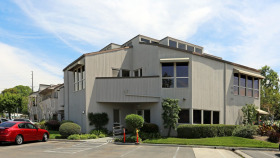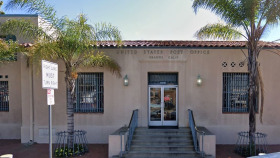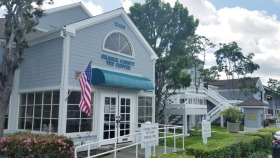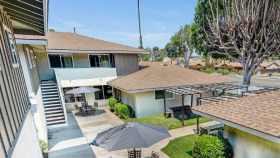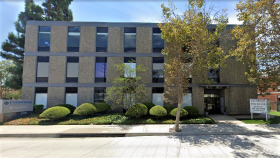Expert Insights
I recently read an article about a man who was arrested in Orange, CA for selling pills to an unsuspecting buyer that mistakenly believed he was purchasing ADHD medications. Turns out the pills were basically made of fentanyl pressed into pill form and designed to look just like one of the most popular anxiety medications on the market. With a total of around 45 pills, the dealer was secretly handing over an extremely lethal 14 grams of pure fentanyl. Had the sheriff’s office not made the bust when they did, it’s almost certain this buyer would have overdosed. And it’s highly likely he would have died. Unfortunately, this is not an uncommon scene for officers of the law nowadays. Thousands and thousands of people buy what they believe are pharmaceutical drugs, only to find out they’re nothing more than fentanyl.
~ Natalie Baker
Paying for Drug Rehab in Orange, CA
 The cost of drug and alcohol rehab in Orange, CA, can be high, but money doesn’t have to be a barrier to care. Costs can vary depending on whether the program is long-term or short-term, what the amenities are like, and the different support levels. Some facilities offer flexible payment options such as sliding scale fees, payment plans, or scholarships as well.
The cost of drug and alcohol rehab in Orange, CA, can be high, but money doesn’t have to be a barrier to care. Costs can vary depending on whether the program is long-term or short-term, what the amenities are like, and the different support levels. Some facilities offer flexible payment options such as sliding scale fees, payment plans, or scholarships as well.
- Government-funded: Some facilities receive funding from the state or federal government in order to provide free or low-cost care. Government-funded programs include methadone clinics, which offer opioid addiction treatment medications such as methadone or Suboxone.
- Grant-funded: Entities such as SAMHSA or private funders award grants to some rehabs. These funding agreements allow the facilities to offer free or low-cost services.
- Scholarships: Some programs provide scholarships to pay for your care. You can also explore applying for a scholarship from an outside organization like 10,000 Beds, which covers the cost of addiction treatment.
You can find free programs as well, though you may have to travel outside of Orange County to access these. There are several free options and addiction treatment centers in nearby Los Angeles County, including the Inland Empire Teen Challenge in Riverside and the Amity Foundation in Los Angeles.
Using Private Insurance
Private insurance plans, including insurance provided through an employer, will cover some portion of Orange drug rehab costs. Many programs for drug and alcohol rehab in Orange, CA, accept private insurance. Most private insurance companies have a network of preferred programs, and your insurer will pay for more of the cost if you go to an in-network facility. Your insurance company can give you a list of in-network facilities to research. You can also ask each facility individually if they take your insurance.
Using Medicare and Medicaid
Medicare is insurance for people over 65 or who have certain disabilities and health conditions. Medicare covers substance abuse programs, but participants will be responsible for a co-pay for care. The co-pay for patient rehab is the same as a hospitalization co-pay. The co-pay for outpatient programs is the same as for mental health care. Medicare covers addiction treatment, including:10.11
- Opioid addiction treatment, including medication-assisted therapy
- Inpatient care
- Alcohol misuse screenings
- Outpatient rehab, including partial hospitalization
- Telehealth
- Group and individual therapy
If you do not have private health insurance, you may qualify for Medicaid. California’s Medicaid program is called Medi-Cal. California residents who meet the income eligibility requirement (earning 138% of the federal poverty level or less) can apply for Medi-Cal. 11,12
Medi-Cal Behavioral Health Division (MCBHD) can help you find addiction treatment in Orange County. Rehab programs partner with Medi-Cal to offer comprehensive rehab and mental health services for Medi-Cal patients. You can contact Medi-Cal directly for more information.
Medi-Cal, which provides low-cost health insurance to low-income people and families, covers:
- Medication-assisted treatment for FDA-approved medications and related counseling
- Substance abuse treatment for children and teens
- Inpatient detox
- Intensive outpatient (IOP)
- Residential or inpatient rehab
- Outpatient rehab
Alcohol and Drug Statistics in Orange, CA
Here are some statistics related to alcohol and drug use in the city of Orange and in Orange County, as well as overdoses and treatment admissions:1,4,5,6,7,8,9

Annually, overdoses result in over 5,500 hospitalizations and nearly 700 deaths among Orange County residents.

The rate of drug deaths in Orange County in 2021 was 13 per 100K residents.
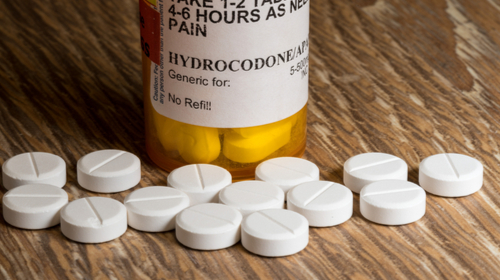
More than 50% of opioid-related overdoses in Orange County were due to prescription painkillers.

In 2020, Orange County hospitals logged approximately 1,200 opioid-related ER visits.
of residents engaged in excessive drinking in 2021.
of auto accident deaths in Orange County were due to DUI.
of all the nation’s drug overdose deaths occur in California.
of Orange County residents were uninsured in 2021, making access to rehab difficult.
California Alcohol and Drug Laws
California law includes the following policies related to substance abuse:1,2,3,4,5
California Employee Protections for Drug or Alcohol Rehab: California’s labor code requires employers with 25 or more employees to provide accommodation to staff who voluntarily choose to attend alcohol or drug rehab. This may include unpaid time off or use of sick or vacation time. Employees who wish to request time off for addiction treatment may be able to request it under the Family and Medical Leave Act or the California Family Rights Act.
Substance Abuse and Crime Prevention Act: This act provides treatment opportunities for individuals who are convicted of non-violent crimes. Eligible offenders may serve their time in drug treatment rather than in prison.
California Government Prevention and Care Services: Senate Bill 110 expanded these services to include contingency management (an incentivized treatment program) as a benefit covered under Medi-Cal. Patients who demonstrate substance-free behavior, such as drug-free urine tests, are rewarded with vouchers or gift cards.
California Ethical Treatment for Persons with Substance Use Disorder Act: This bill protects residents undergoing addiction treatment by requiring alcohol and drug rehabs in California to adopt a client bill of rights that seeks to ensure every client is treated with dignity, honesty, and respect.
California’s Good Samaritan Law: This law encourages California residents to call 9-1-1 if an overdose is suspected. It protects individuals who seek emergency medical care for overdose from legal repercussions for possession of a controlled substance/drug paraphernalia or providing alcohol to minors.
Levels of Care for Substance Abuse
Multiple levels of care exist for alcohol and drug rehab in Orange. Some residents require all levels of care during their journey to recovery, while others receive only the less intensive options.
Medical Detox
Typically the first step in the recovery process, detox is the process of safely and comfortably removing drugs or alcohol from your system while in a supervised medical setting. Many people choose a medical detox program to prevent severe withdrawal symptoms.
Inpatient Care
An inpatient or residential setting involves living at an accredited rehab facility 24/7 to receive treatment for addiction. A combination of evidence-based interventions is provided, which includes individual and group therapy, nutritional counseling, and medication administration.
Partial Hospitalization Programs (PHPs)
PHPs are a type of outpatient treatment in California that often involve many of the same therapies and methods of inpatient care. The difference is that you only visit the treatment facility during scheduled session times, then you can return home.
Intensive Outpatient Programs (IOPs)
A step down from PHPs, IOPs are a type of outpatient treatment that allows you to attend onsite sessions for several hours a day, multiple days each week, while spending the rest of your time at home, working, or fulfilling other obligations.
Standard Outpatient
As the least intensive setting, standard outpatient care is best for residents who are highly motivated and have a strong support system. It involves just one or two hours of treatment per week.
Aftercare
Aftercare, or relapse prevention, provides ongoing support after your rehabilitation program is complete. This may include 12-step groups, non-12-step groups like SMART Recovery, ongoing therapy, sober living homes, and more.
Traveling for Drug and Alcohol Rehab in Orange
Attractions: Orange is a short drive from Disneyland and Disney California Adventure. The Santa Ana Zoo is located just south of the city. The Olde Towne area is home to parks and restaurants. There are venues for live music, as well as the Hilbert Museum of California Art.
Transportation: Families can easily visit loved ones in drug rehabs in Orange, CA. You can reach Orange, CA, by flying into one of several airports. John Wayne Airport in Orange County is the closest. The area is also accessible from Long Beach Airport, LA/Ontario Airport, and LAX. Orange is a stop on the Metrolink regional rail system as well. Orange is accessible from Interstate 5 and California Highway 22, and Highway 55. The city has walkable areas, such as the Old Towne section. There is also public transit provided by Orange County. Residents and visitors can travel via public bus throughout the city.
Hotels: There are nearly a dozen hotels in Orange and in nearby Anaheim. There is also an RV park located in the western part of the city, near the Santa Ana River.
Resources
- Orange County Health Care Agency. (2017). DRUG & ALCOHOL OVERDOSE HOSPITALIZATION & DEATH IN ORANGE COUNTY.
- FindTreatment.gov. (n.d.). FindTreatment.gov.
- California Legislative Information. (2022). Bill Text.
- California Legislative Analysts Office. (2000). Proposition 36.
- County Health Rankings. (No date). Excessive Drinking.
- County Health Rankings. (No date). Alcohol-Impaired Driving Deaths.
- County Health Rankings. (No date). Drug Overdose Deaths.
- Orange County Health Care Agency & Sheriff-Coroner. (2017). Drug & Alcohol Morbidity & Mortality in Orange County.
- Orange County Health Care Agency & Sheriff-Coroner. (2017). 2017 Opioid Overdose & Death in Orange County.
- California Department of Public Health. (2021). California Overdose Surveillance Dashboard: Orange County Dashboard.
- Medicare.gov. (n.d.). Mental Health and Substance Use Disorder Services.
- Centers for Medicare & Medicaid Services. (2020, December 30). Mandatory Medicaid State Plan Coverage of Medication-Assisted Treatment.
- Department of Healthcare Services. MEDI-CAL EXPANSION: COVERING MORE CALIFORNIANS.



